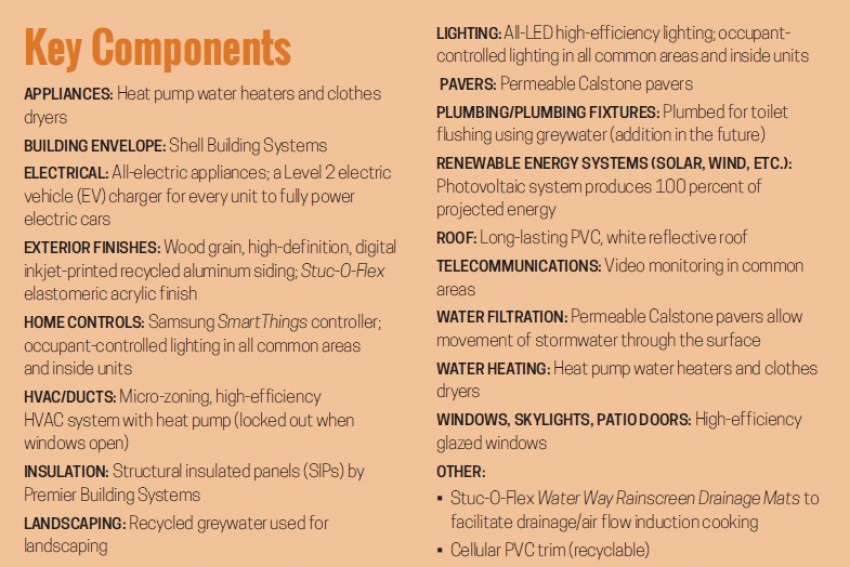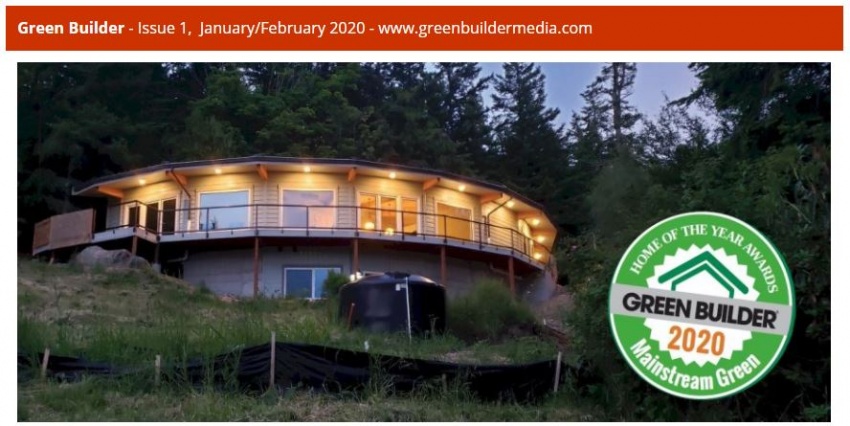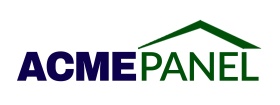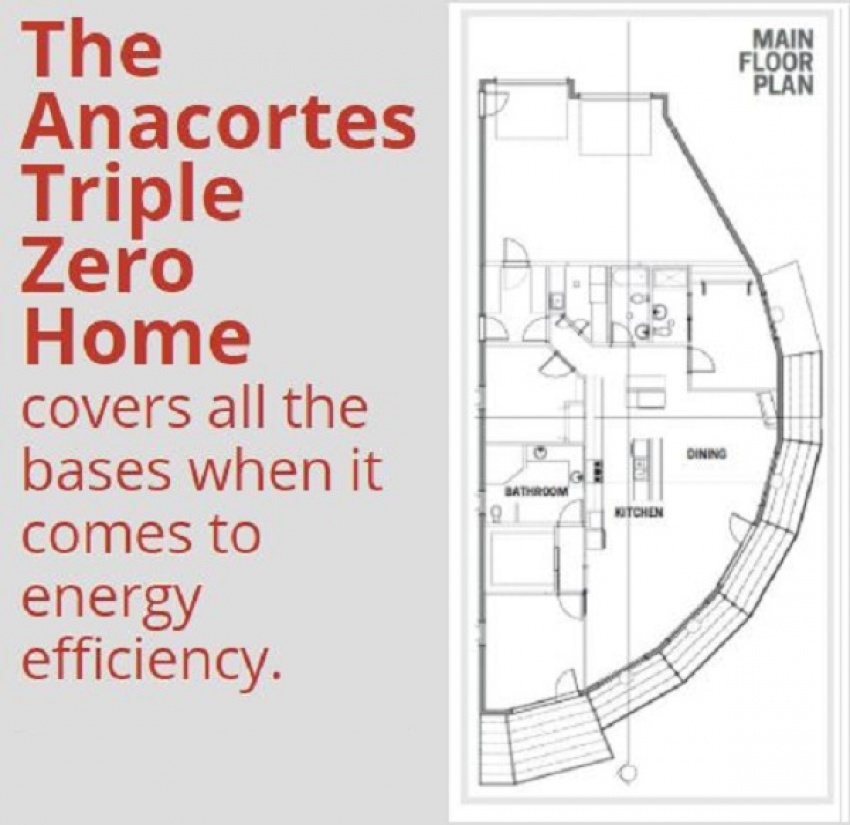
WHEN TED L. CLIFTON was asked to design a net zero home for clients in very Northwestern Washington, he already knew the goals he had to meet. This wasn’t his first such dwelling; it wasn’t even his first in the tight-knit city of Anacortes, population 18,000-plus. After all, being net zero really means being exceptionally efficient with a home’s components. In this case, the goal was triple zero, as in zero energy, zero water and zero carbon emissions. Again, not impossible if done right, he notes. But this dynamic living quarters—dubbed “The Anacortes Triple Zero Home”—gave Clifton, founder and chief designer at Zero-Energy Home Plans, LLC, and his builder partner, David Wallace of CVH Inc./Clifton View Homes, a few things to think about. There wasn’t much property to work with, and owners wanted a premium view of Lake Erie, one of Skagit County’s lowland lakes. |
“We needed to build on a very tiny, narrow lot, while staying at least 100 feet back from Lake Erie, and not taking up the same space as the already-in-place on-site septic system,” Clifton notes. ‘[Ultimately] we were able to build a three-bedroom, three-bath luxury home into less than 1,900 square feet of conditioned living space, while minimizing exterior surface area with a rounded shape.”
GREEN DESIGN IS IN THE DETAILS
The key starting point in the Triple Zero Home’s construction came with the use of structured insulated panels (SIPs) and their composition: a structural insulating foam core sandwiched between two structural facings—typically a composite board such as oriented strand board (OSB).
Clifton View Homes notes that SIPs are manufactured under factory controlled conditions and can be fabricated to fit nearly any building design. The result is a building system that is extremely strong, energy e cient and cost e?ective. Building with SIPs can actually save time and money because the components come ready to install and don’t require extra labor for each component, the company states. The large panel sizes also contribute to a very tight building envelope.
“The use of SIPs allowed us to go places with the design that would not have been possible using conventional framing methods,” Clifton says.
NATURAL LIGHTING AND MORE
Solar power became another key component is the home’s construction. Triple-pane high solar heat gain windows, combined with the Triple Zero Home’s long south-facing overhangs, allows owners to collect lots of passive solar heat during the winter, while minimizing solar gains during the summer.
There were also internal atmospheric conditions to meet. With a blower-door test just over 1.0 ACH50, developers provided fresh air through a MERV 21-powered HEPA ÿlter, which also serves to balance the range fan. A Panasonic WhisperGreen bath fan provides the ANSI/ASHRAE Standard 62.2 make-up air requirement, using a High-efficiency particulate air (HEPA) water as its conduit for fresh air to enter the home. And the COP 3.92 Chiltrix Air-to-Water CX34 heat pump reheats the incoming air more efficiently than it could be recovered using any currently available heat recovery ventilator (HRV), Clifton notes. “The home was also built without any material containing volatile organic compounds (VOCs) inside the building envelope, possibly making this house a ‘Quadruple-Zero’ house, if anyone is counting,” he notes.
SECONDARY LIVING IMPROVEMENTS
Clifton and Wallace also tackled two key green areas that are outside the main living area.
In the basement, there is 20,000 gallons of fresh water storage, along with a rainwater treatment system.The basement also houses the storage tanks and pumps for the hydronic air-to-water heating system, providing heat and hot water to the home at an efficiency of 392 percent.
And in the garage, two 240V, 40Acharge ports provide enough energy with only the first two-thirds of the photovoltaic system installed to power an electric car for about 6,000 miles per year.With the other one-third of the solar array installed, the home would power itself and two electric cars for more than 30,000 miles per year.It’s a key point for anyone who wants a truly sustainable home, Clifton stresses. “In our opinion, you are not zero until your house and your car are zero,” he says.
Overall, Anacortes Triple Zero Home showcases Zero Energy Home Plan’s philosophy. “We get a kick from hearing customers stories about no energy costs,” the company notes. “We hear how some homes have excess solar production and are ‘fueling’ their electric cars; they tell us how they love the floorplan, and the way the house ‘lives.’ This helps insure that we are providing real value in our home designs.”
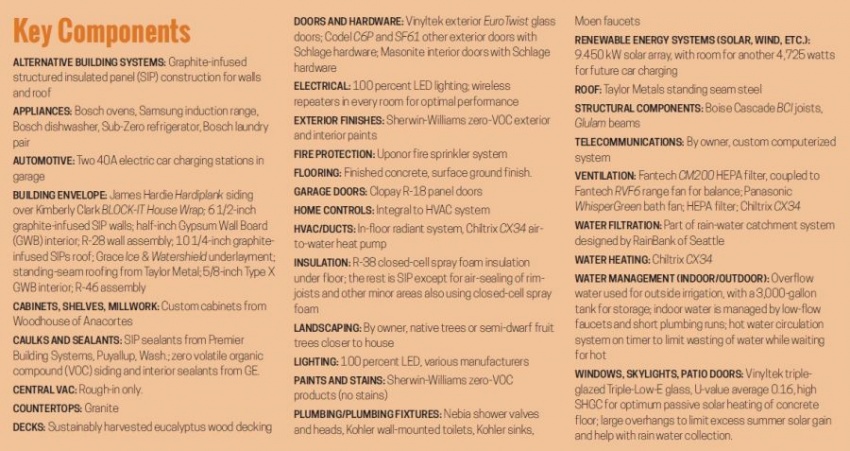
One for All It’s the same shade of green living, no matter where you reside in this upscale, multi-lifestyle complex.
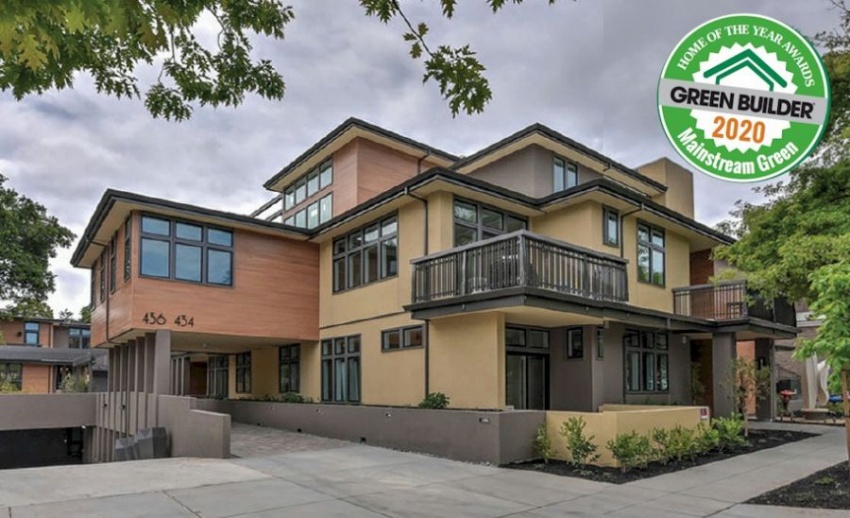
IF ONE GREEN HOME is good, multiple green structures must be great. That’s the crux of the housing at 430 Forest Avenue—a.k.a. “The Palo Alto Apartments”—a series of net zero residences in the heart of downtown Palo Alto, Calif. All 13 dwellings; a penthouse, two townhouses and 10 apartments, were designed to provide a positive impact on residence health while promoting renewable, clean energy, according to project developers.
The 430 Forest Avenue project was designed and constructed by Shell Building Systems, architect David Solnick and developer Prabhas Kejriwal of Sageleaf Forest, LLC. The client, meanwhile, wanted zero-energy and sustainable design elements to gain LEED Platinum certiÿcation (which it ultimately did). This commitment is also exampled by the project team employing CA Green Building Code Tier 2 Compliance, according to Palo Alto Apartments builders.
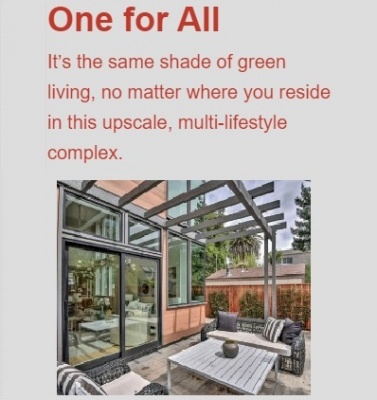
“Environmental and energy modeling was critical given the building’s design with massive Šoor to ceiling windows in many units,” notes James Hodgson, general manager of Premier Building Systems, the provider of structural insulated panels (SIPs) used in the project. The end result was a very green series of apartments, indoors and out.
GREEN ON THE INSIDE
Multi-story building and extreme sus-tainability throughout every component required extensive planning and systems design. In addition, programmable smart home and a wide array of sustainable elements are central to the project’s luxurious living, comfort and day-to-day conserva-tion.
The Palo Alto Apartments’ green status starts with its six-inch SIPs, which Shell Building Systems President Greg Koepf says are “the foundation for the project’s e•ciency and structural integrity.” From there, there is a micro-zoning high efficiency HVAC system with heat pump, all-LED high-efficiency lighting when needed—the natural day variety is emphasized as much as possible—high-efficiency glazed windows, and video monitoring in common areas throughout the all-electric home.
GREENER ON THE OUTSIDE
Meanwhile, the structure’s Modern California exterior character, and transitions of scale and materials are compatible with the area’s diverse design and historical nature. A subterranean garage enabled design of a low-proÿle building mass that mitigates loss of natural light on adjacent neighbors’ properties. It also frees up space to create building undulation for architectural interest and give room for design that embraces ample natural light, developers note. Also, each unit has its own Level 2 electric vehicle (EV) charger if—and when—it is needed.
A long-lasting PVC white refiective roof includes a photovoltaic system that produces 100 percent of the structure’s projected energy use.
Permeable Calstone pavers allow move-ment of storm water through the surface, reducing runoff and watering contaminants before it enters groundwater. And, greywater plays a large role in the building’s green status. Recycled content is used for landscaping; toilets will soon be plumbed for its use during fiushes.
